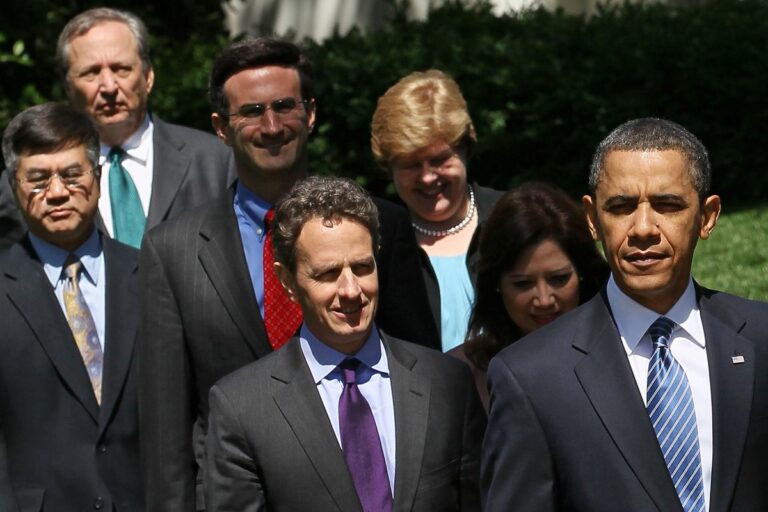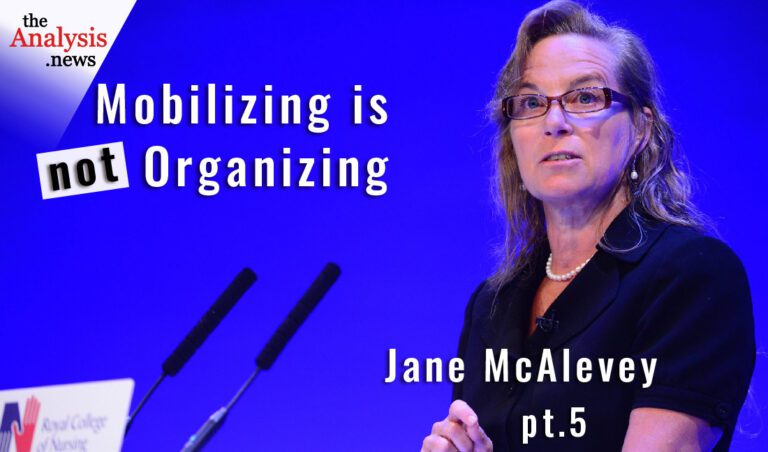In Oshawa Ontario, workers organize for a public takeover an unused GM plant to produce electric vehicles or supplied to fight the pandemic. Sam Gindin joins Paul Jay on theAnalysis.news podcast.
Transcript
Paul Jay
Hi, I’m Paul Jay. This is theAnalysis.news podcast.
Sam Gindin
So this is part two of my discussion with Sam Gindin in part one, which I urge you to listen to, if you haven’t. We talk about more generally the issues of what’s happening with the trade unions in this pandemic moment. And as dire as the crisis is, it’s also a moment of opportunity for the mass movement and for this progressive struggle inside the unions to make the unions play a more dynamic, even leading role.
There’s one example of what could be a form of struggle, a model that’s taking place that I think is particularly interesting. And that’s in Oshawa, Ontario, where an idle GM plant is. There’s a fight taking place amongst the workers there and people in the community to nationalize the plants and convert it to selling electric vehicles to the government. So it’s actually a sustainable model, but so far, the federal government of Canada has not gone for it.
Now joining us once again is Sam Gindin. Sam has been involved in this fight in Oshawa. And he, just for those that didn’t hear Part One, Sam was the research director of the Canadian Auto Workers; now Unifor from 1970 forward to 2000. And he co-authored a Socialist Challenge Today with Leo Panitch and Steve Marr. Thanks for joining us again, Sam.
Sam Gindin
Great to be back.
Paul Jay
So tell us the Oshawa story.
Sam Gindin
OK, I probably will have to give quite a bit of background because a lot of people won’t know about it. A lot of your listeners–––
Paul Jay
won’t know where Oshawa is. Oshawa’s just outside Toronto.
Sam Gindin
Yeah. Which is where I was going to start. It’s just outside of Toronto. And at one point it was actually the largest auto hub that GM had in North America, one of the largest in the world. It used to have three assembly plants, that were making 750,000, 800,000 vehicles a year. It was making radiators. It was making radios. It had 23,000 workers in that community. And over time, it kept slipping down. And then a year and a half ago, GM announced its closing. And a group of us, including some autoworkers, some retirees, the president of the Labor Council, some community members, began to think about what to do. And I think we came to a few very important conclusions. One is that begging GM to bring back jobs was over. This wasn’t going to happen. We had to think beyond GM, and we had to start thinking about actually think public ownership.
We didn’t want another private company coming and repeating this after getting a lot of subsidies. That was one thing. The second thing is we decided that we really wanted to think about going beyond the industry. We shouldn’t just think about what can we do that can compete. We wanted to think about something that was socially useful, and, you know, we thought the environment was an obvious issue. We were thinking about equipment for an aging population.
We ended up focusing on the environment, and we focused on electrical vehicles. But we didn’t want to do this in competition with China and the US and Mexico. We wanted it to be something that was planned. We wanted to create the kind of vehicles that governments were buying, so could fit into their plans: minibuses, postal vehicles, utility vehicles, ambulances. So we’re trying to get out of competition as well. And where it led us to is that we had to think in terms of this question of conversion and the environment. And a big thing we had to think about was a lot of the environmental movement was talking about the environment and just transitions and Green New Deal. But it was very abstract. Workers didn’t believe it. Like, who is going to give you a just transition? We didn’t have the power to do this. To talk about trend doing this meant you actually had a talk about challenging private property. You can’t plan, just transition if you accept private property and a focus on profits.
So this this gave us a strategic way of engaging workers and trying to maintain manufacturing capacity in their community, because ultimately everything depends on having some manufacturing capacity whatever the social use you have, however you want to fix the environment and save the environment. That would require certain material things that you’d have to actually be able to make. So it was a way of engaging workers in a way that wasn’t abstract, that they could begin to also ask the larger questions. And this question of conversion––– we began to move toward seeing it as a major strategic question because it linked jobs. It linked the restructuring that people were facing and how you do it in a different way. It linked social use and a different way of thinking about the purpose of production. It linked having a manufacturing capacity rather than having a capacity that was profitable. In other words, if people want to close things that are still socially useful, we felt that, well, we don’t want to close it because it’s our productive potential. It’s like the environment; it’s like planning. So conversion was so critical.
Now I just want to give a couple of drawbacks and then kind of talk a little bit about where we’ve been going. The drawback was we had enormous difficulty getting workers on site. I mean, the strategy that should have been adopted is work is just taking this over, and other workers seeing that you’re taking this over and getting the same idea because this is going to be happening everywhere. We didn’t have mass support from the workers when we started.
And the reason for that is workers have gone through a large series of defeats. Their expectations about what was possible had really been lowered. The union wasn’t on their side. This was devastating to us because, you know, workers saw us as a little rump group. What are you going to achieve? Whereas they look to the union, even when they were critical they saw the union as being able to put things on the agenda. And the union thought this was pie in the sky and wasn’t supportive. There was no radical movement in the country where we could put a lot of pressure on the companies. So we were stuck with the fact of having to start slow. And a couple of the things we did, it meant that we had to get this message out publicly into the media, into the community, and start creating a sense of something was happening as a way of attracting workers.
We did a feasibility study which we raised money for, to show that this was all sensible, that there was a market for this. And you could do this, and you could pay decent wages. It was practical. Given all the money you always give to the corporations, it is more than practical. So we did that and that was a form of mobilizing. And then when the pandemic hit, we changed our argument from electric vehicles to the need to create protective equipment for workers, especially for the N95 masks that frontline workers, fire fighters as well, but frontline health workers desperately needed and weren’t being made.
Paul Jay
You mean the conversion would be not to produce electric vehicles, but produce this equipment? What do they call it? PPE or something like that?
Sam Gindin
That’s right. In other words, in the immediate, immediately you could start doing this because the companies have the links and the technical capacity, the engineering capacity to do this.
But it also meant that we started linking up with health workers. We did a cavalcade where we went around the hospitals in Oshawa, around the Long-Term Care Facilities. And then that ended up at the GM plant. And that was very successful. It actually attracted a lot of workers before they thought we were kind of out to lunch. We did have a press conference where we had this change with the Ontario Federation of Labor there. We got them to come with the head of the Ontario Hospital Hospital unions to come. That we should make masks. And by coincidence, I think, we were part of the pressure, but I don’t think we can take all the credit. GM actually began to make masks, but not the masks that were most important in the plant. Now, the problem was that they were only using a very small fraction of the plant with 50 workers when they could be using the whole plant. They were making these masks because they actually needed them themselves when they were going to open auto production in North America, and to give to the suppliers when they were going to get to work. But they weren’t making the main masks, which is the other problem. So we’ve had this campaign going on. What we’re trying to do now is to use the credibility that we got from this Oshawa plant to start talking to workers in Windsor, where there’s a closing of a shift and now they’re getting nervous. And to workers in Oakville where there’s a Ford plant, Windsor’s, a Chrysler plant and start telling people you’ve got to start forming committees, you’ve got to talk, start talking about the worst case scenarios, about what you could convert, if worse, came to worse. And then we’ve been also talking to young groups who’ve gotten actually quite excited. We’ve gotten a lot of people coming to us from high school movements and college movements and university and especially the environmental movement.
I think the environmental movement is getting the fact that they’re not making–––you know, they’re doing fantastic work in terms of getting the environment on the agenda, but they’re not making breakthroughs amongst workers. And if they don’t make those breakthroughs, workers can become a barrier to the environmental stuff. So they think they’ve been seeing that they have to find a way of engaging workers. So we’ve been talking to all the key environmental movements and we want to have a meeting in mid-July where we’ll bring kind of a summit. We’ll bring representatives from all these groups together. And by the way, we’re also talking to people in Alberta about the closing of oil and what’s going to happen to Alberta, to environmentalists. And people are interested in conversion who contacted us because of our feasibility study. So we’d like to get people together with representatives from everywhere. We’ll update them on our our experience and its strengths and its limits because if we don’t become bigger, we can’t win these things. And becoming bigger is actually a way of winning locally as well. It’s a way of making people locally feel like this is relevant. And then, you know, use the national connections everywhere. And use unions, at least to sit in and listen, to get them interested because they’re national structures. To start having things happen elsewhere and to start thinking that, well, maybe the question of conversion is, can be at the core of a major strategy on the environment.
This would involve fighting for our National Convergence Agency that, instead of closing plants, you transform them and maybe you transform plants that are making things they shouldn’t be making. To have in each location research on the Environment and Technology Center that thinks about what you could be making in a community and hiring thousands of young, hundreds in each location of young engineers or hiring thousands across the country. And having, you know, environmental committees in each community saying, what do we really need in this community, and how do we fight around the environment and producing into the environment?
We’ve used a slogan in Central Services Essential Equipment to start linking both. You know, that we can make the essential equipment that frontline workers make. But this begins to once you start talking this way, the environmentalists can see, hey, that fits with what we want to talk about in terms of the environment and linking needs and production around the environment. Because, you know, I just want to emphasize, if we’re going to fix the environment, it isn’t just a question of slowing down climate change. It’s about fixing everything we’ve already done. It means changing everything about how we live, work, play, travel, and changing all those things. It includes material things. And of course, it includes cultural things. And where the cultural things are so important it means that things–––it doesn’t mean that we have to reduce our living standard. It means that we have to redefine it. If we start thinking that it’s more important to have public spaces, better health, a richer education, more you know, more art, more green spaces, developing other parts of our capacity. So it’s not just about how you consume things, but how you consume, you know, all kinds of things and how you do them. Then it’s a different kind of lifestyle that we’re talking about. But that relates, again, to expanding the public sector, to thinking about the public sector differently. So that’s kind of what we’re doing. And I think that–––I don’t want to exaggerate what we’re doing, but I think the point about it is all the limits we’re coming up against keep pushing us to thinking in more class terms, in more alliances, in terms of how do you deal with the more difficult questions that keep coming up.
I might mention one that I guess we haven’t talked about now or before. One of the real things that disciplines us all the time is this question of capital being able to move. And, you know, we went out of the financial crisis, and we gave capital all this money, and then when it was over, they were stronger and we went just went back to normal. This time, people aren’t even criticizing finance very much. Partly because Main Street is also getting some money.
But we should come out of this crisis by saying that, look, ultimately we want finance to be utility. But if we can’t get there yet, why don’t we have some quid pro quos? One quid pro quo would be to say we’re going to put a levy on every financial institution, and we’re going to put that money into infrastructure, reconstruction, especially the environment and convergence structures. We’re going to use that in a social way. And the second thing is we ultimately have to say that you can’t in a democratic society, just decide that you don’t like the way things are going. So you’re going to leave. We’re going to prevent that from happening. And part of this is in physical terms, saying that when corporations decide to close, that’s undemocratic and we’re going to challenge that. And, you know, we have the strength to do it, we’re going to expropriate it. If we don’t have the strength than we have to compromise. OK. But we’re going to start using it in a different way. So it’s all about trying to build different kinds of productive capacity. So we actually know how to do things. because we don’t actually know how to do all these things. You don’t learn them under capitalism, including how to control finance. So we have to develop those capacities. But above all, it’s the question that you keep raising, which is how do you develop the political capacities? And it’s a process. But you have to think big. So you get it. So you confront these issues and then keep growing.
Paul Jay
When you were organizing in Oshawa as you organize in Oshawa, did you get further in terms of support from the workers who were, now, I guess they’re unemployed, or some that were still there? I mean, how many how many workers are still working there? Just the 50 making masks? is that it?
Sam Gindin
There’s the 50 to 60 making masks. There was a promise of 300 at the end of this year, which you know is very iffy whether it will happen. It’s some, you know, it’s making some components. You know, there’s there’s a question of, you know, doing a small thing in a plant that is so giant. You know, it’s 10 million square feet. It isn’t going to last very long.
Paul Jay
A few years ago in Chicago—this must go back at least 10 years or something, workers took over a plant that was being closed down, that was, I think, producing windows or something like that. And it became real cause celebre. And you’d think you’d need a triggering event like that to really kick things off.
Sam Gindin
You do, but you have to—-You know, in that case, as an example, the workers took it over. There were about 250 workers. It became a cause celebre. Everybody on the left constantly used it as an example. What ultimately happened was it ended up to be a worker co-op. The workers weren’t guaranteed the minimum wage because i they were no longer workers, they were owners. So their wages fell really drastically. It fell to a fraction of the workforce. It fell down to seventy five. And then I think. I think it’s even just a few dozen now. And people stopped talking about it. But the lesson from it was that you have to do these things, but you actually need state support to do it. You needed the state to say we’re going to create a market for you. You know, that’s why we were trying to do this feasibility study to say there is a market, and it’s linked to the environment. So you have to have––you can’t just take it over if you’re just going to have to compete and deal with what, you know, capitalist markets are. So it does require that kind of militancy, but it also requires that that militancy be linked to larger demands from the state.
In terms of, you know, your question about workers. We’re getting more interest now. But I don’t want exaggerate it. Because what happens is–––we’re still not at the point. You know, workers now are saying that’s a good idea, but I don’t think you’ll be able to pull it off. You know, they don’t see the NDP making it a major issue in Parliament. They don’t see their union talking about it. You know, we’ve got some very good stories, but it’s hard to sustain it unless you are doing things like taking over plants. So, you know, there’s some sympathy growing. But the other thing that begins to happen, a lot of workers actually went through major depressions when this finally happened. And what they were afraid of doing is getting their hopes up again. They don’t want to start thinking; OK, I’m gonna get active in something that’s got one chance in 100.
Logically, it’s worth it. Why not take it? You’re unemployed anyways. But people do want to go through the psychological experience of getting their hopes up and then it getting dashed again. They’re trying to figure out how do they survive. So it does raise the question of your need to transform unions, and you need a rebellion in unions, so that when people see this, they say, why aren’t we doing this? Why aren’t we thinking about where the future is going and doing this? And so, you know, all these kinds of things need to come together for these things to happen. It’s a process, and the environment puts it on the agenda. But also this particular moment puts it on the agenda. We were so unprepared for this moment. Why don’t we say we’re also unprepared for the environment? What are we actually doing? So we’re not caught suddenly by saying, Hey, we don’t even have the manufacturing capacity to make the things that the environment is going to be. So, you know, these are big questions. But there’re also things that can be started and create that dynamic.
Paul Jay
All right. Thanks for joining us.
Sam Gindin
Thanks, Paul. Great to talk.
Paul Jay
And thank you for joining us on theAnalysisnews podcast.





